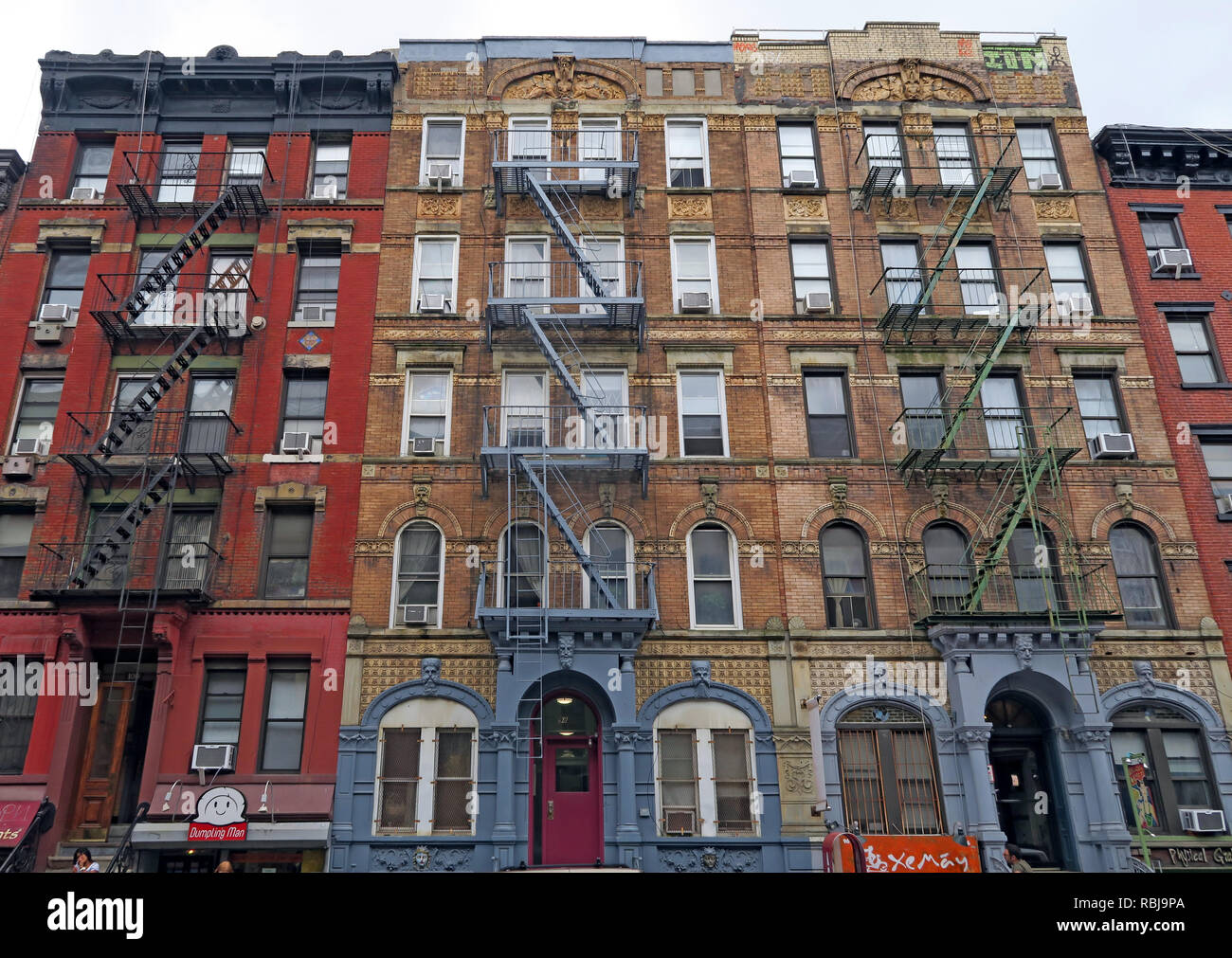Tenements at St Marks Place, East Village, Manhatten, New York City, used in Led Zeppelin Physical Graffiti album

Image details
Contributor:
Tony Smith / Alamy Stock PhotoImage ID:
RBJ9PAFile size:
51.3 MB (2.9 MB Compressed download)Releases:
Model - no | Property - noDo I need a release?Dimensions:
5028 x 3564 px | 42.6 x 30.2 cm | 16.8 x 11.9 inches | 300dpiDate taken:
31 August 2018Location:
96 and 98 St. Mark's Place, East Village, Manhatten, New York City, NY, USAMore information:
Physical Graffiti is the sixth studio album by the English rock band Led Zeppelin. It was released as a double album on 24 February 1975 by the group's new record label, Swan Song Records. The album was originally released with a die-cut sleeve design depicting a New York City tenement block. The album designer, Peter Corriston, was looking for a building that was symmetrical with interesting details. The two five-storey buildings photographed for the album cover are located at 96 and 98 St. Mark's Place in New York City. The original photograph underwent a number of tweaks to arrive at the final image. The fifth floor of the building had to be cropped out to fit the square album cover format. The band wrote and recorded eight new songs for the album in early 1974 at Headley Grange, a country house in Hampshire, which gave them ample time to improvise arrangements and experiment with recording. The total playing time covered three sides of an LP, so they decided to expand it into a double by including previously unreleased tracks from the sessions for the earlier albums Led Zeppelin III, Led Zeppelin IV and Houses of the Holy. The album covered a range of styles including hard rock, progressive rock, rock 'n' roll and folk. The album was then mixed over summer 1974 and planned for an end-of year release. It was delayed because of the sleeve, which was designed by Peter Corriston and featured a theme around a tenement block in Manhattan, New York. Other than the jam "Boogie With Stu", which features former Rolling Stones pianist Ian Stewart, the band provided all instrumentation and vocals themselves, being Robert Plant (vocals, harmonica), Jimmy Page (guitar), John Paul Jones (bass, keyboards), and John Bonham (drums). The album was produced by Jimmy Page, with the help of a number of different engineers and mixers. Physical Graffiti was commercially and critically successful upon its release and debuted at number one on album charts in both the US and the UK. I